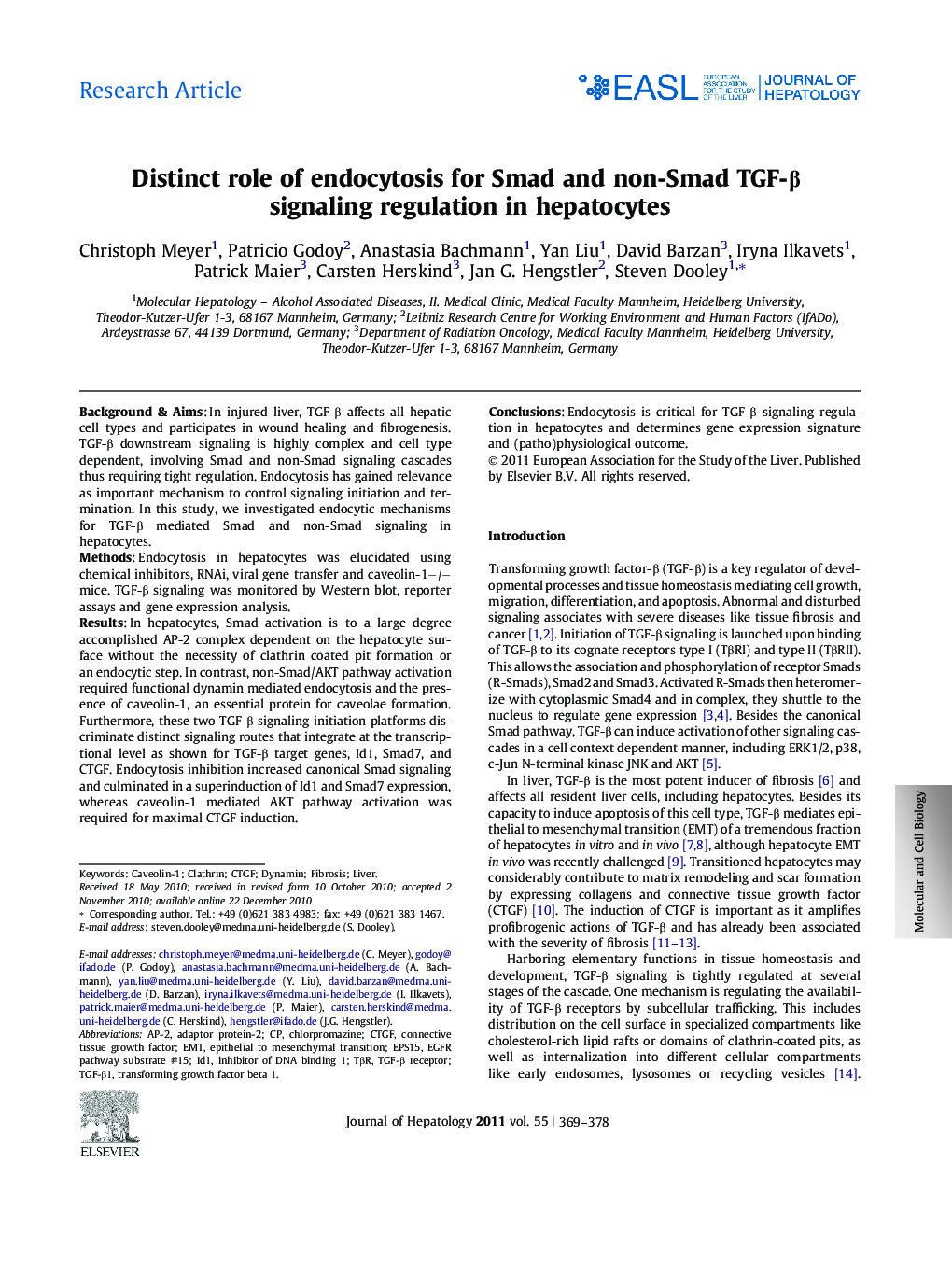| Article ID | Journal | Published Year | Pages | File Type |
|---|---|---|---|---|
| 6108135 | Journal of Hepatology | 2011 | 10 Pages |
Background & AimsIn injured liver, TGF-β affects all hepatic cell types and participates in wound healing and fibrogenesis. TGF-β downstream signaling is highly complex and cell type dependent, involving Smad and non-Smad signaling cascades thus requiring tight regulation. Endocytosis has gained relevance as important mechanism to control signaling initiation and termination. In this study, we investigated endocytic mechanisms for TGF-β mediated Smad and non-Smad signaling in hepatocytes.MethodsEndocytosis in hepatocytes was elucidated using chemical inhibitors, RNAi, viral gene transfer and caveolin-1â/â mice. TGF-β signaling was monitored by Western blot, reporter assays and gene expression analysis.ResultsIn hepatocytes, Smad activation is to a large degree accomplished AP-2 complex dependent on the hepatocyte surface without the necessity of clathrin coated pit formation or an endocytic step. In contrast, non-Smad/AKT pathway activation required functional dynamin mediated endocytosis and the presence of caveolin-1, an essential protein for caveolae formation. Furthermore, these two TGF-β signaling initiation platforms discriminate distinct signaling routes that integrate at the transcriptional level as shown for TGF-β target genes, Id1, Smad7, and CTGF. Endocytosis inhibition increased canonical Smad signaling and culminated in a superinduction of Id1 and Smad7 expression, whereas caveolin-1 mediated AKT pathway activation was required for maximal CTGF induction.ConclusionsEndocytosis is critical for TGF-β signaling regulation in hepatocytes and determines gene expression signature and (patho)physiological outcome.
